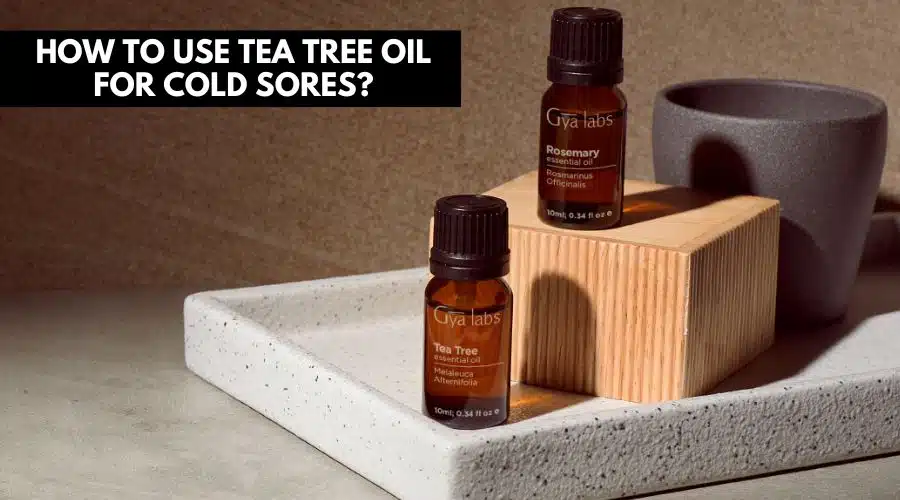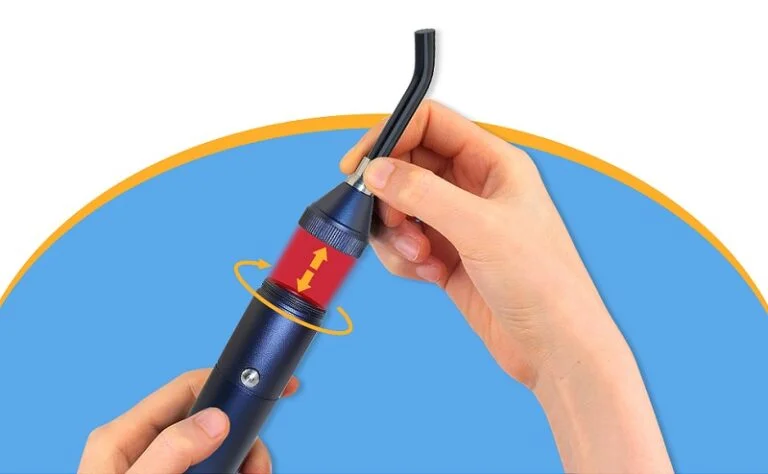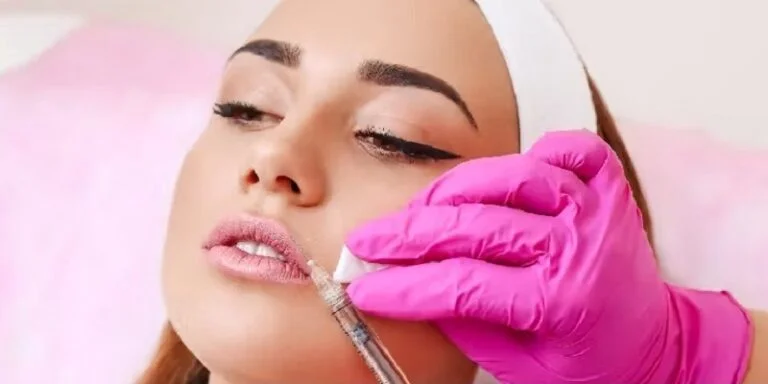How to use tea tree oil for cold sores?
Cold sore treatment is a topic of interest for many individuals. While Abreva is a viable option that can eliminate cold sores within 2 days, there is a growing curiosity about natural remedies for their eradication.
Tea tree oil emerges as a remarkable solution in this regard, as it possesses astounding properties that facilitate rapid recovery from cold sores. Being a natural remedy, tea tree oil boasts fast healing abilities.
The application of tea tree oil can significantly reduce healing time and effectively address various discomforting skin conditions. Additionally, opting for the cream, Abreva, can prove to be costly. Therefore, considering the utilization of natural alternatives such as tea tree oil is advisable.
How to use tea tree oil for cold sores? More Information
Tea tree oil possesses natural properties that effectively expedite the recovery process and alleviate pain associated with cold sores. Its ability to impede viral multiplication, prevent infection, and accelerate the healing of blisters explains why it is a vital component in numerous over-the-counter cold sore medications.
It is not over the counter medication for the treatment of cold sores, abreva is used for this purpose, you can go for that option. Here I will guide you about this treatment way.
Step by Step Treament Process:
The application of tea tree oil to fever blisters is a simple process that can be completed quickly. Follow these steps for effective application, along with the necessary tools:
1. Prepare the diluted mixture:
The first step is to make a solution by taking only 2 to 3 drops of Tea tree oil along with the equivalent amount of water. Just mix it up to make the solution.
2. Use a cotton swab for application:
Take a fresh cotton swab and apply the diluted mixture directly to the fever blisters. Dispose of the swab after each application to prevent re-infection or the spread of the HSV-1 virus. Avoid using your bare hands to apply the oil, as the virus can infect the fingers (known as herpetic whitlow).
3. Gently remove any crusting:
During the ulceration phase, carefully remove any crusts that may have formed on the fever blisters. This step helps the tea tree oil to penetrate more effectively. Take care to avoid contact with healthy skin, as the oil can be excessively drying.
4. Repeat application:
For optimal results, repeat the application process in the morning, late afternoon, and before bedtime. Following this schedule consistently will yield the best outcomes.
5. Practice good hygiene:
Personal hygiene is very important because cold sore virus known as HSV-1 has the ability to spread fast if not treated with care, here good hygiene helps to mitigate the risk of the spread. Wash your hands after applying the tea tree oil mixture and maintain cleanliness.
Don’t share towel, soap or shampoo during the treatment. Please remember that cold sores are caused by HSV-1 virus that can spread sharply, you need to keen yourself clean and practice above all steps to avoid spreading the virus.
Tea Tree Oil vs. Abreva: Which Option is the Best?
There is no doubt about it that Abreva is an FDA-approved over-the-counter treatment cream that heals fast, you can easily get desired results within 72 hours. However, some individuals may harbor concerns about the potential side effects of medications and prefer to explore natural alternatives. Enter tea tree oil—a highly regarded natural remedy renowned for its efficacy in treating various skin conditions.
While the evidence supporting tea tree oil’s effectiveness remains largely anecdotal, it carries weight and significance. Your trust in modern medicine plays a pivotal role in determining the best path for your specific needs.
Our recommendation leans towards Abreva as the primary treatment option, but having tea tree oil readily available in your home also proves advantageous. Essential oils, like tea tree oil, possess versatile properties that make them valuable for addressing a range of skin issues. Therefore, having this natural treatment accessible at home can be highly beneficial.
In the “versus” battle between Abreva and tea tree oil, the decision rests with you. While all indicators, including our recommendation, point towards Abreva, we encourage you to conduct your own testing to discover what works best for you. Although tea tree oil may lack the FDA seal of approval, it stands as a reputable alternative treatment for individuals seeking natural remedies for cold sores.
It is worth noting that tea tree oil, like many other essential oils, boasts a multitude of applications. Therefore, it can serve as a viable backup plan in situations where Abreva may not be readily accessible during your time of need.
Tea Tree Oil Vs Other Essential Oils for Cold Sores:
Do you know that tea trea oil is not only the way one secure the cold sore, you can use several other ways to treat cold sores, there are several other types of oils you can use for the treatment of cold sores because these oils have antiviral and antimicrobial properties as TTO to treat cold sores.
1. Peppermint Oil:
You can use Peppermint oil that also work as a catalyst like Tea Tree oil (TTO) to heal the cold sores fast. New research has highlighed the ability of this oil against the treatment of HSV-1 and HSV-2, indicating its potential effectiveness in treating herpes infections as well.
Similar to tea tree oil, peppermint oil should be diluted with a carrier oil before application. A recommended ratio is approximately 12 drops of carrier oil for every two drops of peppermint oil. Apply the mixture to the affected area using a cotton swab multiple times a day or as needed.
2. Lavender Oil:
When seeking alternatives for cold sore treatment, lavender oil emerges as a compelling option due to its versatility and potential to address various conditions, including skin irritations like cold sores. While it may not possess the specific antiviral compounds found in tea tree and other essential oils, lavender oil boasts remarkable anti-inflammatory properties that can significantly contribute to reducing the pain and discomfort associated with cold sore outbreaks.
It tends to redue the risk of irritation on the skin. To experience its soothing effects, simply apply one or two drops directly onto the cold sore. However, it is wise to conduct a patch test before initial use to assess for any potential adverse reactions and ensure compatibility with your skin.
While lavender oil may not directly target the viral aspect of cold sores, its powerful anti-inflammatory properties can effectively manage symptoms and provide relief during outbreaks. By incorporating lavender oil into your cold sore treatment routine, you can embrace a natural and potentially soothing alternative that complements your efforts in managing and alleviating the discomfort caused by cold sores.
3. Clove Oil:
Scientific evidence has consistently substantiated the exceptional qualities of clove oil, highlighting its noteworthy antimicrobial, antiviral, and pain-relieving properties, which have demonstrated effectiveness against the herpes simplex virus type 1 (HSV-1) and various other viruses. Consequently, clove oil emerges as a potent therapeutic option for alleviating the discomfort frequently associated with cold sore outbreaks.
Through harnessing the antimicrobial attributes of clove oil, it exhibits the potential to combat the underlying viral infection responsible for cold sores. Additionally, its antiviral properties contribute to symptom mitigation and facilitate the healing process.
Furthermore, clove oil is widely recognized for its analgesic properties, offering relief from the pain and discomfort commonly experienced during cold sore outbreaks. This natural oil acts as a soothing agent, providing respite from the sensations accompanying such episodes. Don’t apply directly, it can cause irritation.
Incorporating clove oil into your cold sore treatment regimen enables you to tap into its diverse range of benefits. From its ability to combat the virus to its potential for pain relief, clove oil stands as a valuable tool in effectively managing and addressing the discomfort caused by cold sores.
These alternative essential oils offer potential benefits in treating cold sores. While Tea Tree Oil remains a popular choice, peppermint oil, lavender oil, and clove oil provide additional options with their own unique properties. Experimenting with different oils and finding what works best for you may lead to successful cold sore management.
Is Tea Tree oil good for Cold Sores?
Tea Tree oil is a natural remedy renowned for expediting the healing process of cold sores. While it is not an over-the-counter treatment, its slow yet steady healing properties can be harnessed, taking into account a person’s natural immunity.
Although it is not a recommended primary procedure for healing cold sores, its application during the initial stages can be beneficial. Individual results may vary, but having this essential oil readily available in your home is a prudent choice. Typically, an untreated cold sore will heal naturally within a span of two weeks. However, the inclusion of tea tree oil is likely to expedite this process.
Among the wide array of essential oils, Tea Tree oil holds a prominent place. Though empirical evidence remains anecdotal, there are indications of its effectiveness. Moreover, products like HERP-B-Gone cream, which incorporate tea tree oil as one of their ingredients, boast the potential to heal sores within a mere 72 hours.
If we examine the tea tree oil has standalone effectiveness against cold sores with slow healing capacity, moreover, it’s antiseptic, anti-inflammatory and antiviral propertises are the big factors that provide natural healing ability to control the spread of HSV-1 virus.
How Quickly Can Cold Sores Dry Up?
Tea tree oil offers the advantage of drying up cold sores several days faster while maintaining a sterile environment. Its antiviral, antiseptic, and anti-inflammatory properties make it a natural remedy that effectively combats the herpes simplex virus.
While it is not always recommended to purposely “dry up” a cold sore due to associated risks, this approach can yield positive outcomes. By applying tea tree oil to the affected area, the oil’s sanitizing properties help prevent the spread of the virus, reducing concerns for the person affected.
It is important to note that allowing the skin and scabs to become too dry increases the likelihood of cracks forming. Premature removal of a scab necessitates restarting the healing process. Therefore, it is crucial to maintain moisture in the area to facilitate safer healing and minimize the risk of scarring or red marks.
Tea tree oil effectively dries up an active cold sore promptly. Even when diluted, its potent ingredients can extract moisture from the blister. While over-the-counter options typically keep the sore moist during the healing process, essential oils possess the ability to completely dry out the cold sore. It is advisable, however, to incorporate post-treatment moisturizing techniques, such as using a medicated lip balm, to ensure optimal healing.
How fast Tea Tree Oil can Heal?
Upon applying Tea Tree Oil (TTO) to a cold sore, the soothing sensation becomes immediately apparent. In most cases, the healing properties of this essential oil can manifest within as little as 24 hours, depending primarily on the promptness of its application.
To maximize the benefits of TTO, it is crucial to apply it at the earliest indication of a cold sore forming. The sooner the treatment commences, the greater the potential to impede the sore’s full development, leading to a more expedited resolution within a few days.
It is crucial to emphasize that the effectiveness of TTO, as well as any topical medication, in the healing process of a cold sore is closely tied to the timing of treatment initiation. Consequently, outcomes may exhibit some variation. Nevertheless, irrespective of when the oil is initially administered onto the blister, the majority of individuals can anticipate a reduction in symptoms.
The severity and duration of inflammation will be mitigated to varying extents, thus promoting a more manageable and comfortable experience for those grappling with cold sores.
What are the side effects of Tea Tree Oil?
Incorporating Tea Tree Oil into cold sore treatment holds significant appeal owing to its low risk profile and minimal side effects. However, it is crucial to exercise caution when using TTO to ensure safety.
It is essential to remember that Tea Tree Oil should never be ingested as it can be toxic, and utmost care must be taken to prevent contact with the eyes, which can lead to adverse reactions. By observing these precautions, individuals can harness the potential benefits of Tea Tree Oil while prioritizing their well-being and safety.
1. Topical Application:
If you have sensitive skin, applying diluted TTO directly to a cold sore should not result in any significant negative side effects. However, in some cases, it may cause skin irritation, swelling, and, for individuals with acne-prone skin, dryness, itching, burning, stinging, and redness. To mitigate the risk of irritation, it is advisable to conduct a patch test prior to use to rule out potential allergic reactions or adverse responses.
While extremely rare, when TTO is combined with lavender oil, it can potentially disrupt hormone production in prepubescent males, leading to a condition called gynecomastia. However, such instances are highly unlikely. Generally, TTO is known to have no negative interactions with other medications, oils, or supplements.
2. Ingestion:
It is important to note that TTO should never be consumed under any circumstances as it is toxic when swallowed. Ingestion of TTO can result in adverse effects such as confusion, rashes, unsteadiness, difficulty walking, and in severe cases, it can lead to a coma.
3. Use during Pregnancy:
While TTO is generally considered possibly safe for topical application during pregnancy or breastfeeding, some individuals may choose to exercise caution and avoid its use to mitigate any potential adverse side effects.
Prior to using TTO for cold sores, it is always recommended to consult with a healthcare professional, especially if you have any underlying health conditions, to ensure its suitability and minimize any potential risks or side effects.
What are the alternatives to Tea Tree Oil?
While Tea Tree Oil (TTO) is a popular choice for treating cold sores, it is essential to note that other options exist, including both over-the-counter (OTC) and prescription remedies.
1. Other Essential Oils for Cold Sores:
Various essential oils can be found in health food markets and traditional grocery stores, thanks to the growing popularity of natural healing oils. Finding these oils is now more convenient than ever, whether through online or in-person shopping.
It is worth mentioning that you have the flexibility to mix and match oils to create the perfect remedy for your skin. While using a carrier oil is recommended, combining different oils can enhance their healing properties.
List of some Oils:
- Chrysanthemum Oil
- Eucalyptus Oil
- Hyssop Oil
- Lavender Oil
- Chamomile Oil
- Clove Oil
2. Antiviral Creams:
Numerous antiviral creams are available in the market that function similarly to TTO. One widely used option is Abreva, which can help reduce the duration and severity of cold sores when applied promptly. Additionally, prescription creams like topical Acyclovir (Zovirax) and Penciclovir (Denavir) are commonly prescribed to combat cold sores.
To achieve optimal effectiveness, prescription medications should be taken at the very first sign of a cold sore. Oral antiviral drugs such as Acyclovir (Zovirax), Famciclovir (Famvir), and Valacyclovir (Valtrex) can expedite the healing process of cold sores when taken as directed.
Famvir is typically taken in a single dose, while Valtrex is initially taken at the onset of a cold sore and then repeated 12 hours later. Zovirax is taken five times a day until the cold sore resolves.
3. Red Light Therapy:
Another alternative worth considering is Red Light Therapy, which utilizes a specialized device for treating cold sores. This therapy can offer relief and aid in the healing process by using infrared red light to target the affected area. These devices are specifically designed for treating cold sores on the lips, mouth, nose, ears, knees, feet, and hands, providing relief from joint and muscle pain associated with cold sores.
When exploring alternatives to TTO for cold sore treatment, it is advisable to consult with a healthcare professional to determine the most suitable option based on your specific needs and preferences. Their expertise will help guide you towards the most effective solution for managing and healing cold sores.
Conclusion:
While there is a noticeable dearth of comprehensive studies specifically focused on Tea Tree Oil’s (TTO) efficacy in treating cold sores, the existing research has generally indicated its potential as a viable remedy for reducing the severity and duration of these bothersome and uncomfortable inflammations.
Studies conducted thus far have demonstrated that TTO possesses antiviral, antiseptic, and antimicrobial properties that can effectively alleviate the severity and duration of cold sores, comparable to the results achieved by commonly prescribed antiviral drugs.
An added advantage of TTO is its natural sourcing, which contributes to its appeal. Additionally, TTO is renowned for its minimal side effects, making it a promising option for individuals seeking relief from the discomfort of cold sores.
While further research is warranted to establish a conclusive understanding of TTO’s effectiveness for cold sores, its potential as a naturally derived solution with demonstrated benefits is certainly worth exploring for individuals suffering from these recurring inflammations.







